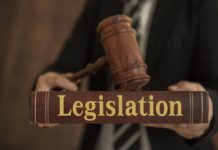PIC 4020 can prevent the grant of a visa even if all the information contained in a document is true
As previously discussed, PIC 4020 does not apply to all visas subclasses. But to the ones it does apply, it contains two essential elements: ‘a bogus document or information that is false or misleading in a material particular’ (emphasis added).
The words ‘false and misleading in a material particular’ refer to ‘information’, but not to ‘document’. As a result, even if all the information contained in a bogus document is true, that will not render the document ‘not bogus’.
After all, the definition of ‘bogus document’ under s 5 of the Migration Act 1958 (Cth) makes no reference to whether or not the information contained in it is false. That definition reads as follows (emphasis added):
bogus document, in relation to a person, means a document that the Minister reasonably suspects is a document that:
(a) purports to have been, but was not, issued in respect of the person; or
(b) is counterfeit or has been altered by a person who does not have authority to do so; or
(c) was obtained because of a false or misleading statement, whether or not made knowingly.
The definition under (c) above relates to documents obtained because of a false or misleading statement, not a document that contains a false or misleading statement or information.
In Arora, the Full Court of the Federal Court unanimously held as follows:
15. … there is no requirement in PIC 4020(1) that the falsity of a bogus document should be relevant to the criteria that the Minister is considering. PIC 4020(1) and the definition in s 5 address separately the falsity, respectively, of information (in PIC 4020(5)) and bogus documents (in s 5). Each has its own particular regime. The definition of ‘bogus document’ in s 5 is not concerned with the truth or otherwise of statements but with the reliability of documentation. It would be a most unworkable outcome if the Minister could not rely on the fact that a document was counterfeit but had to consider, in turn, whether the statements contained in it were, in any event, correct and otherwise relevant to the matters he had to consider…
Disclaimer: the above is a mere tentative analysis of a legislative provision. The views there expressed might not reflect the views of the Department, the AAT or the courts. The law or policies might have changed between the writing and reading of this article. The author of this article and Migration Law Updates disclaim any liability for any action (or omission) on their part based on any information provided (or not provided) in this article and are under no obligation to keep the general public nor practitioners informed about the matters discussed in this article or any other matters, or any future changes to any of those matters. It is the responsibility of each practitioner to obtain access to primary sources of law and policy by themselves and to carry out their own research and come to their own conclusions on legislation, case law, policies and more. This article is not intended for the general public.
Sergio Zanotti Stagliorio is a Registered Migration Agent (MARN 1461003). He is the owner of Target Migration in Sydney. He can be reached at sergio@targetmigration.com.au










